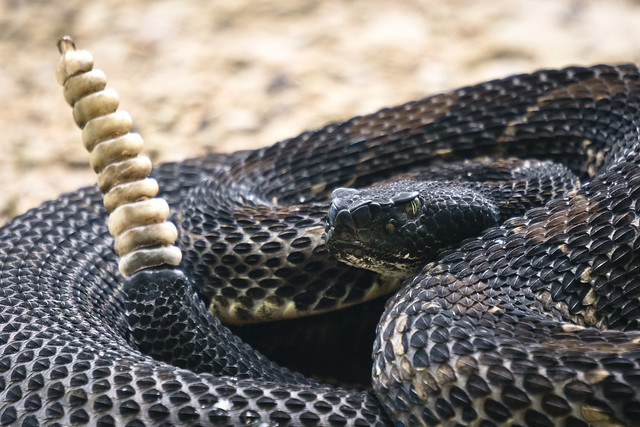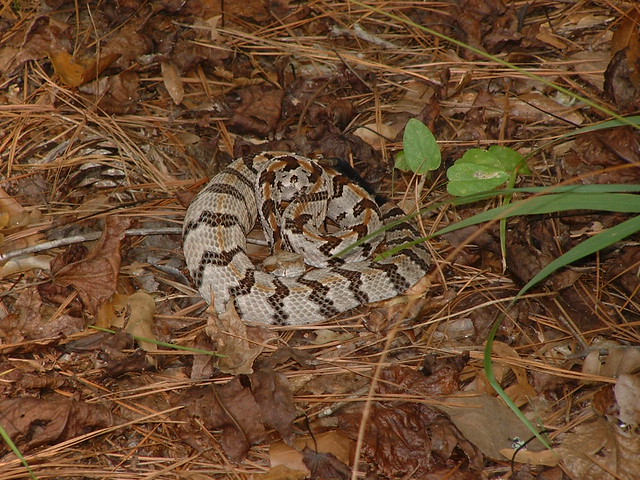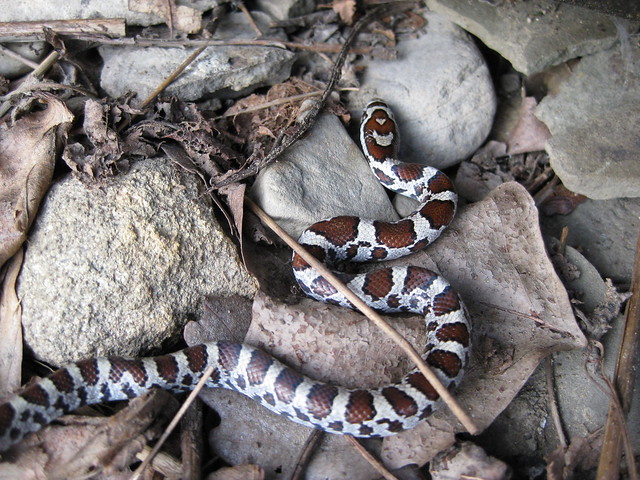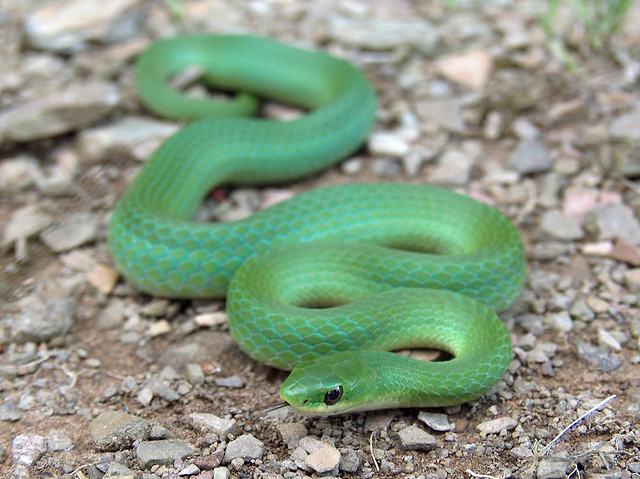It is an otherworldly sound – it both belongs and doesn’t. At once it instills a fear that renders you motionless, but also attracts you with a deep rooted thrill fueled by adrenaline. Rattlesnake.
I remember my first wild Pennsylvania rattlesnake. Black phase female, basking on a rock not too far from her preferred crevice. Out of sight from the trail, but in a place that was filled with the aura of these incredible animals. She was fairly unconcerned with our presence, and we respectfully kept our distance, taking only a few photos.
Much maligned, these animals are often misunderstood. Too often viewed as threats, a menace, their population has been severely decreased. Through hunting, habitat loss, development, and roadkills, humans have definitely affected the rattlesnakes, and not often for the better.

People always tell stories. Rattlesnake stories are always dramatic. There’s the time an Audubon member brought rattlesnakes to a meeting. From the original meeting minutes, I quote, “At the meeting at Washington Jr. High there was a little diversity of reactions when inquisitive eyes looked into the cage brought by Bob Hallquist. The women especially quickly withdrew. The cage contained two rattlesnakes.”
There are the stories about the bucket loads that Kinzua Dam construction workers scooped up. Or the time I almost stepped on a yellow phase female who struck and missed my foot. (I choose to believe she missed on purpose). Rattlesnakes are favorite subjects for tales.
They are not graceful creatures, nor particularly beautiful. (Some would beg to differ with me on the latter). They are heavy bodied and have a much more stout appearance than other snakes. Whereas being lithe and quick are characteristics of our most common serpentine residents, the rattlesnake exhibits none of that. With good reason, as they have a built in defense mechanism. Just as humans traded in agility, strength, and stamina for tool use, rattlesnakes seem to have given up the ability to escape quickly in favor of venom, resulting in their much attributed “Don’t tread on me” attitude.
The rattlesnake was an adopted symbol of early America, used by Benjamin Franklin and newspapers of the area to promote unity of the colonies against Britain, and by the first sailors and mariners of the Continental Navy. The rattlesnake became the first, albeit unofficial, symbol of a unified force during the Revolutionary War. There is an intrinsic courage in a rattlesnake, a power that is used wisely and selectively. Little wonder the early Americans channeled their aspirations through such a symbol.

Whether in the wild or in hand, rattlesnakes are awesome to behold. In fact, all snakes are sort of awesome to behold. There is the Red-bellied Snake, with its camouflage caramel dorsal pattern and vivid scarlet underside. Or the Smooth Green Snake, a brilliant verdant gem they’re rarely seen, found in grassy areas, and look like a plastic toy. They really are ridiculously smooth, much smoother than one would think a snake could be. The Ring-necked Snake is more common on rocky hillsides, a demure charcoal gray with blazing yellowish-orange belly and ring around its neck.
Some snakes have legends that accompany them from across the ocean. The “Spotted Adder” that folks commonly refer to in this area is, in fact, not an adder. It is an Eastern Milksnake and they are not venomous. In fact, they are often household helpers with their voracious appetites for mice and rodents. They seem to prefer human dwellings, perhaps earning their name from their presence in dairy barns… not for the milk as folks once thought, but for the mice.

Whether rattlesnake or garter snake, I hope you find the bravery to accept these serpents as the remarkable creatures they are, linked with humans through folklore and legend. Do no harm, as they will do none unto you, provided you keep your distance and give them the respect all living creatures deserve.
Audubon Community Nature Center builds and nurtures connections between people and nature. ACNC is located just east of Route 62 between Warren and Jamestown. The trails are open from dawn to dusk as is Liberty, the Bald Eagle. The Nature Center is open from 10 a.m. until 4:30 p.m. daily except Sunday when it opens at 1 p.m. More information can be found online at auduboncnc.org or by calling (716) 569-2345.


Recent Comments